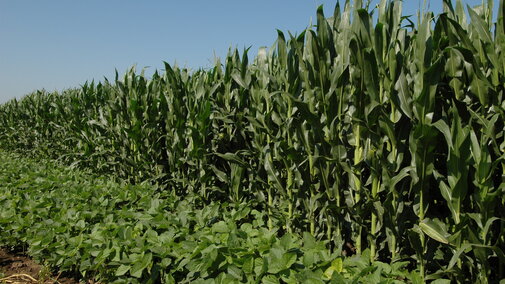Nebraska corn silking was 11%, well behind 60% last year and 42% for the five-year average, according to the USDA's National Agricultural Statistics Service. Soybean progress was also lagging with just 28% blooming, compared with 63% by this time last year and the average of 54%. Similarly, just 14% of the state's winter wheat crop had been harvested by July 14, well behind 57% last year and the average of 52%.
- Corn condition rated 1% very poor, 4% poor, 19% fair, 63% good, and 13% excellent.
- Soybean condition rated 1% very poor, 4% poor, 24% fair, 63% good, and 8% excellent.
- Winter wheat condition rated 2% very poor, 5% poor, 20% fair, 55% good, and 18% excellent.
- Sorghum condition rated 0% very poor, 3% poor, 24% fair, 66% good, and 7% excellent. Sorghum headed was 13%, behind 22% last year, but near the five-year average of 10%.
- Oat condition rated 2% very poor, 5% poor, 26% fair, 58% good, and 9% excellent. Oats headed was 95%, behind 100% last year, and near the average of 99%.
- Dry edible bean condition rated 2% very poor, 6% poor, 31% fair, 56% good, and 5% excellent. Dry edible beans emerged was 95%.
- Pasture and range conditions rated 1% very poor, 1% poor, 13% fair, 71% good, and 14% excellent.
For the week ending July 14, there were 5.3 days suitable for fieldwork. Topsoil moisture supplies rated 1% very short, 13% short, 75% adequate, and 11% surplus. Subsoil moisture supplies rated 0% very short, 6% short, 86% adequate, and 8% surplus.

